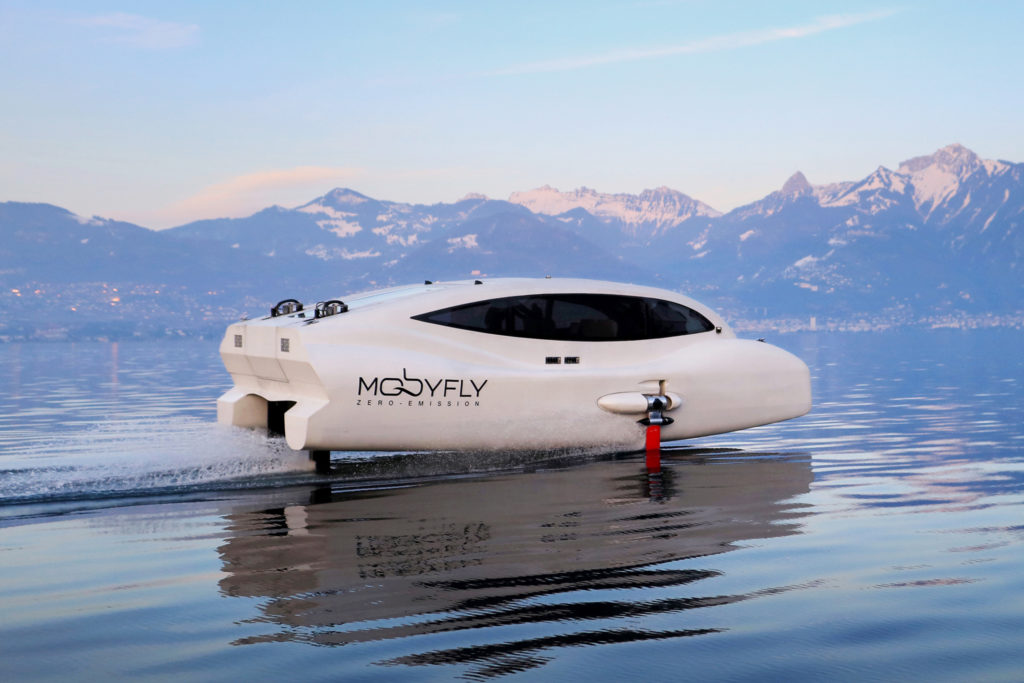MobyFly is on a mission to decarbonise maritime, lake and river transport. With the EU’s ambitious new targets of cutting all transport emissions by 55% by 2030 and reaching net zero by 2050, the technology developed by the company – an electric hydrofoil – could not have come at a better time. Tests run on its small, 12-passenger MBFY10 model (10 metres) under real-life conditions on Lake Geneva have demonstrated the effectiveness of this technology platform, which can now be extended to two other boat sizes, able to accommodate 60 or 300 passengers. “The platform is modular, and our goal is to see it used on a large scale,” says Sue Putallaz, the company’s CEO and co-founder.
“We want to use hydrofoil technology for mass transit, both passenger and freight,” Putallaz says. The foils are located under the boat’s hull, where they act like the wings of a plane. With enough speed, they create lift, raising the boat above the surface of the water and allowing it to travel at as much as 70 km/h, while also saving 70 to 80% energy. MobyFly’s foils are retractable, so the boat can be sailed in just 50 cm of water, in other words in any harbour. The first model of the boat is powered by electric batteries (the use of hydrogen fuel cells is under development), making it a solution that produces no noise, waves, smell or emissions. On the strength of this, the company was named a technology pioneer by the World Economic Forum in 2023.
The first pre-production units will be available from the second half of 2024, and the company is counting on a second round of funding of around CHF ten million to bring the product to market. MobyFly already has several customers interested in using this technology for passenger transport, including the Società Navigazione del Lago di Lugano and Nosso Tejo in Lisbon. The company is targeting the European markets and then Asia, particularly Japan.
“We offer an excellent potential return on investment,” says Putallaz. She points out that a conventional 300-passenger ferry can consume 2100 litres of diesel an hour at top speed. And replacing combustion engines with electric motors drastically reduces fleet maintenance costs too. Putallaz also stresses the benefits for local authorities of investing in this type of mobility solution to relieve traffic congestion in waterfront towns and cities: “Our technology enables natural infrastructures such as lakes, rivers or the sea to be used at a drastically lower cost and much more quickly than constructing new road or rail infrastructures. And with a zero carbon footprint!”

MobyFly SA